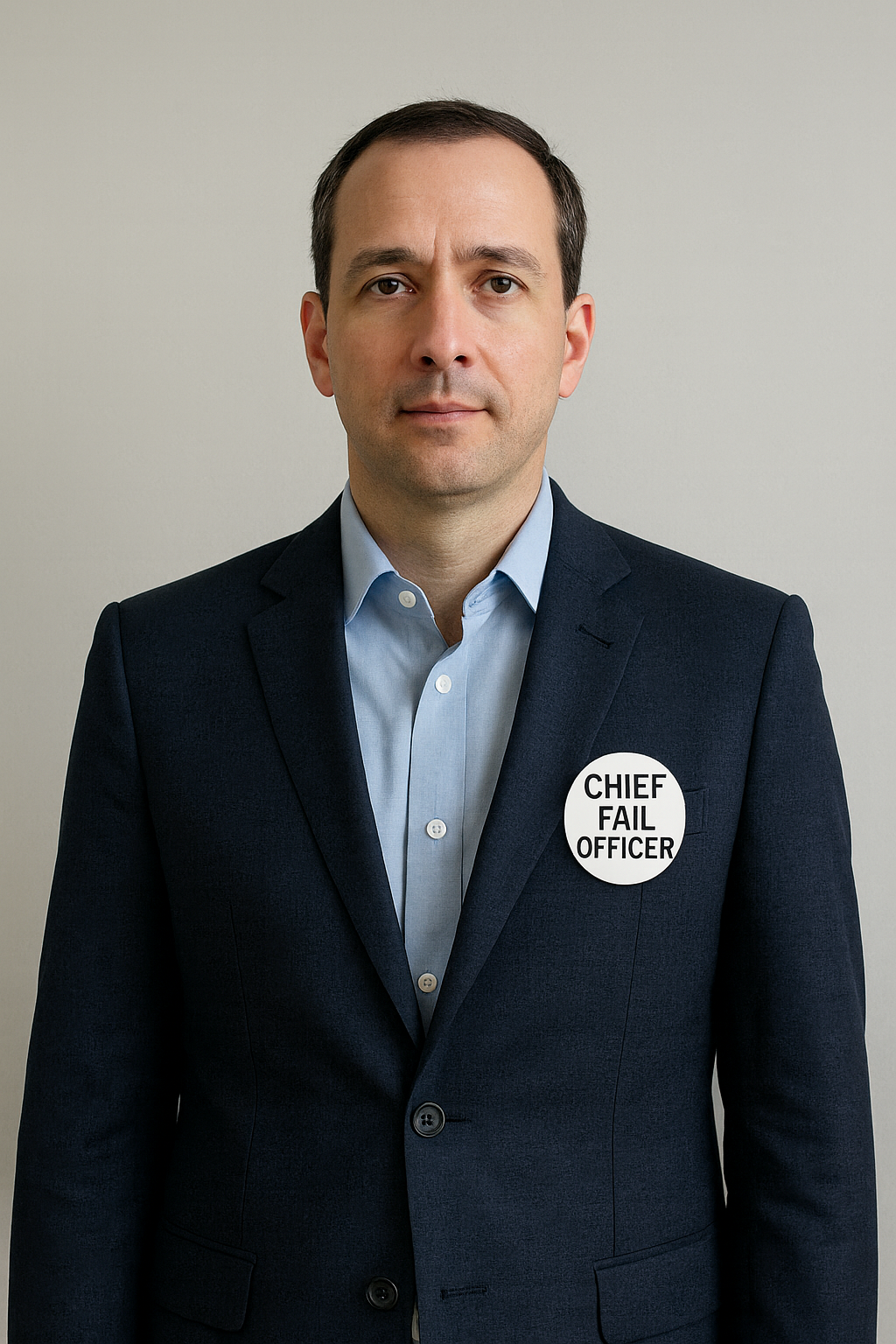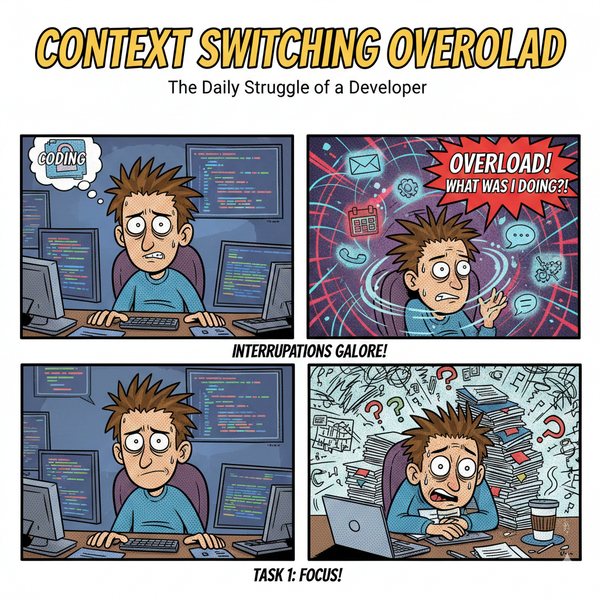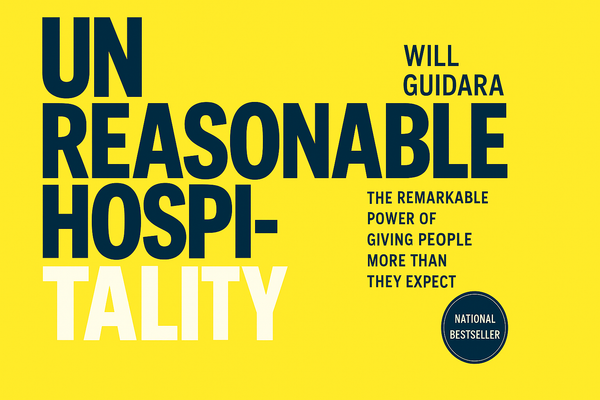Why Your Company Needs a Chief Failure Officer: Building an Innovation Culture
Stop punishing mistakes. Learn why appointing a Chief Failure Officer (CFO) is essential for building a powerful innovation culture and accelerating your team’s learning velocity to ensure you fail forward.

The windshield is significantly larger than the rearview mirror for a reason.
Yet, most businesses operate as if that tiny rearview mirror is their primary display. They obsess over post-mortems, launch endless retrospectives, and meticulously dissect what went wrong long after the moment has passed. They are looking backward, not forward.
But what if we stopped dwelling on the past and started accelerating the future? What if your competitive advantage was simply learning faster than everyone else?
To truly drive forward momentum and build a sustainable innovation culture, every company needs to formalize the role of risk and learning. That’s why you need a Chief Failure Officer.
The Flaw in “Fail Fast”: Why You Must Fail Forward
“Fail fast” is the established gospel of the modern startup. It’s a good starting point, but the phrase often overlooks the critical follow-through: fail often.
A single, fast failure teaches very little. It’s an isolated event that’s easy to dismiss or forget.
True growth comes from frequent, intentional iteration. As one insightful business leader put it, the goal isn't just to fall on your face; it's to keep moving, adapting, and shipping faster than everyone else. The real metric isn't how quickly you failed, but your learning velocity.
In short: don't just fail fast—fail forward, continuously.
Enter the Chief Failure Officer (CFO)
Let's get bold about business culture. Imagine appointing a Chief Failure Officer (or Chief Fail Officer).
This isn't a vanity title or a department head for mistakes. It's a strategic, executive-level role whose entire mission is to dismantle the cultural fear of failure and replace it with a culture of radical, fast learning.
The CFO’s Core Mission:
- Normalize Smart Risks: Make measured, intentional risks the default mode of operation.
- Build Repeatable Learning Loops: Ensure that every experiment, regardless of outcome, yields actionable data.
- Encourage Faster Release Cadences: Push teams to ship, test, and iterate weekly, not quarterly.
- Reward Useful Failure: Celebrate the attempt, the learning, and the velocity—not just the success.
If your competitors are shipping a new product or marketing campaign once a quarter, and your teams are running multiple experiments every week, you are not playing the same game. They are drawing up a strategy while you are already dominating the field.
The CFO Playbook: 5 Steps to Accelerate Learning Velocity
Success isn't about crafting the perfect, guaranteed-to-win play. It's about taking more shots on goal. In product, marketing, or operations, the winners are those who iterate the fastest and gather the most data.
Here is how a Chief Failure Officer operationalizes this mindset across the organization:
1. Default to Experimentation
Stop debating ideas in endless meetings. Instead, reality-test them. Every new idea or feature must have an experiment baked in from the start, complete with clear metrics and a time limit. The minimum viable discussion is the experiment itself.
2. Measure Iteration Rate, Not Just Outcomes
What is your company’s Iteration Rate? How many shots are you taking per month? A CFO tracks this. They recognize that if a team runs five bold tests and one succeeds, that team has delivered exponentially more value than a team that spent six months planning one "perfect" launch. Track learning, not just wins.
3. Decouple Ego from Results
A missed shot is still forward motion if you gained data. A CFO works to remove personal and team ego from outcomes. The company needs to celebrate bold attempts and the data they yield, creating a safe space where a failed experiment is treated as a valuable data point, not a career mistake.
4. Optimize for Recovery Speed (The Ultimate KPI)
Failure is inevitable, but how fast can your team adjust, pivot, and retake the shot? The time between realizing an experiment failed and launching the revised attempt the Recovery Speed—is arguably the most important metric for innovation. Faster recovery means shorter product cycles.

5. Make Failures Visible and Celebrated
Shame thrives in silence. Confidence is built on transparency. Create internal channels or dashboards that explicitly showcase experiments, learnings, and even financial write-offs from failed attempts. Visibility removes the fear of judgment and increases institutional confidence in taking the next leap.
Why Momentum Wins: Adopt the Windshield Mindset
Too many organizations fixate on perfecting the past through meticulous failure analysis. But in a fast-moving market, growth is a forward sport. windshield your vision of the future is where all the action is.
Let’s stop agonizing over what went wrong and start systematically optimizing for what’s next.
Organizations that win in the long term are not perfect. They are prolific. They get more shots on goal because they have ingrained the habit of trying more, faster, and more intentionally. Whether you create the formal title or simply adopt the Chief Failure Officer mindset, putting your foot on the gas is the only path forward.
Follow me
If you liked this article, Follow Me on Twitter to stay updated!



